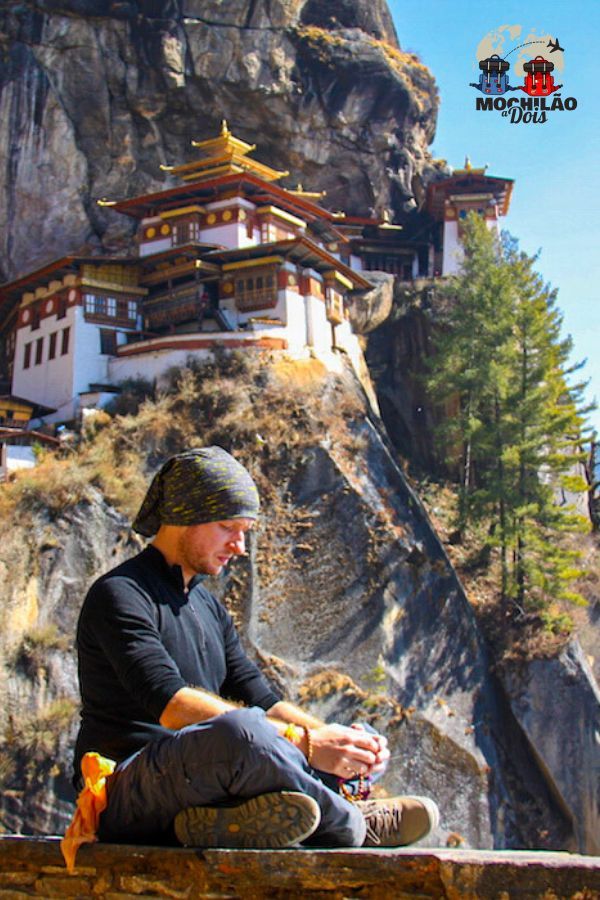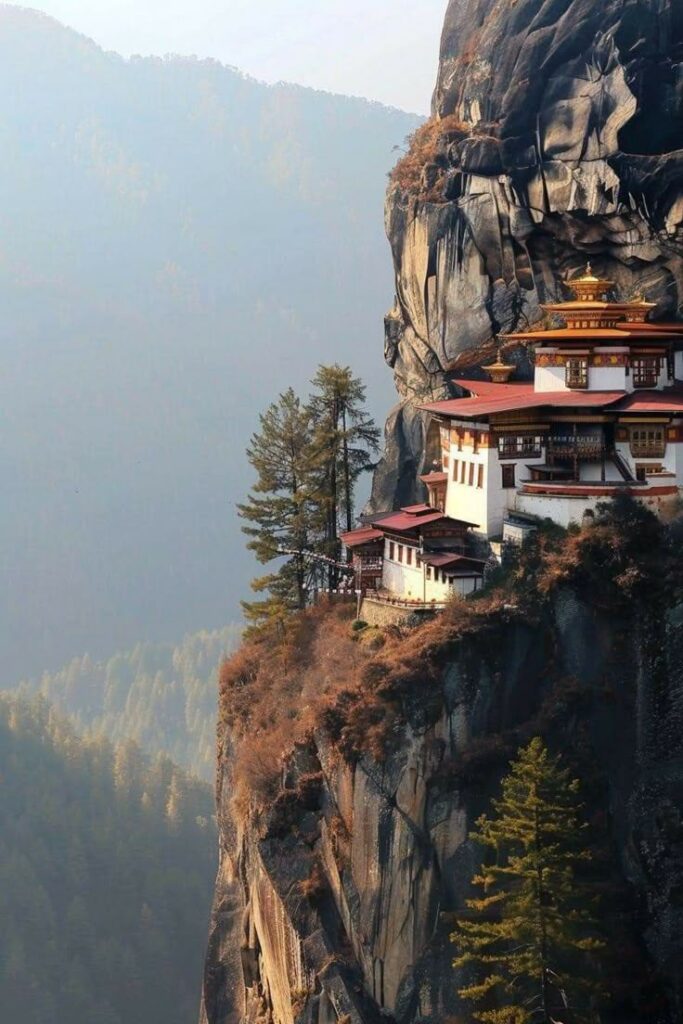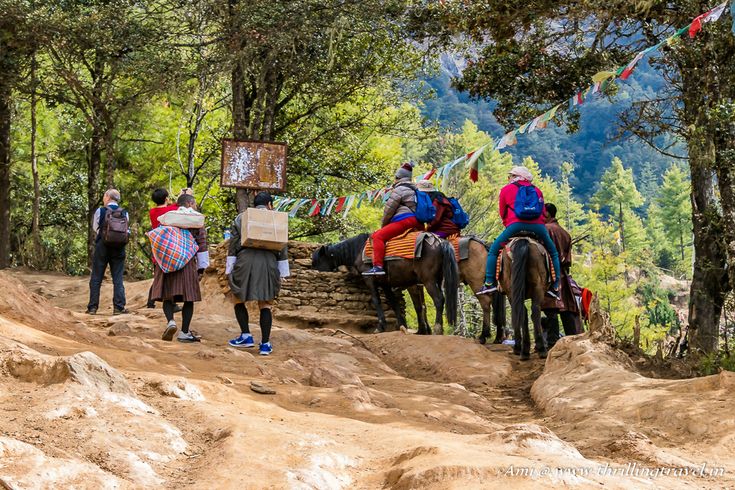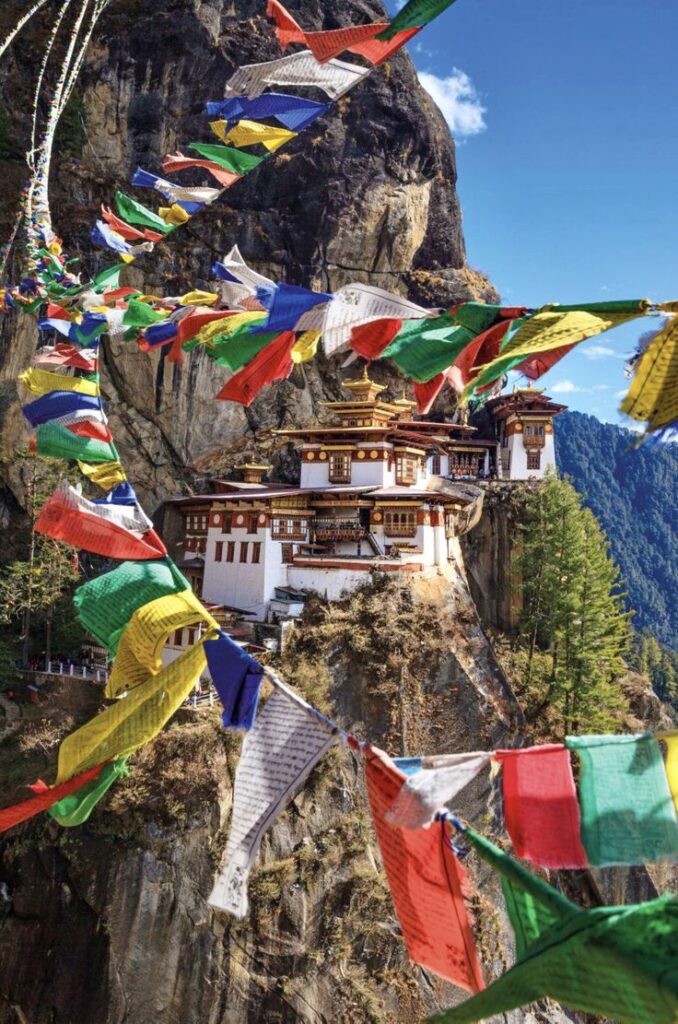The Paro Taktsang, also known as the Tiger’s Nest Monastery, is a representation of Bhutan’s spiritual core and more than just a geographical feature. Perched on the edge of a cliff at 3,120 meters (10,240 feet) above sea level, the monastery represents centuries of devotion, spirituality, and awe-inspiring beauty. This sacred site offers not only an exceptional hiking experience but also a deep dive into Bhutan’s rich history, culture, and religion. Paro Taktsang is a must-see for every tourist looking for adventure with a spiritual twist.

In this blog post, we’ll take a comprehensive journey through the history, spiritual importance, legends, and details about Paro Taktsang. We’ll also explore practical information such as how to get there, what to expect during your hike, and more. Get ready to immerse yourself in the secrets of Paro Taktsang, a destination that promises a powerful adventure unlike any other.
Table of Contents
What Is Paro Taktsang?
The main attraction of Paro Taktsang is a revered Buddhist monastery situated on a mountain. The Paro Taktsang complex consists of four separate temples, including the monastery. It was built on the site where Guru Rinpoche, also known as Padmasambhava, meditated for three months in the 8th century to subdue the demons that were terrorizing the region. This spiritual significance is why the monastery is referred to as Tiger’s Nest, symbolizing the magical flight of Guru Rinpoche on the back of a tigress.
The monastery is revered by both Bhutanese people and Buddhists around the world for its connection to the divine and its role in the spread of Buddhism throughout Bhutan. Paro Taktsang is also an architectural marvel, seamlessly blending with the natural rock formations of the Paro Valley, making it one of the most unique and stunning temples in the world.
The monastery is the spiritual center of Bhutan, yet it is more than just a visible landmark. It remains one of the most visited pilgrimage sites in the country, drawing thousands of visitors every year, including Buddhists, travelers, and those seeking spiritual peace.
The Fascinating History of Paro Taktsang

The history of Paro Taktsang is as mystical as the monastery itself. According to legend, in the 8th century, Guru Rinpoche, a revered figure in Tibetan Buddhism, arrived in Bhutan on the back of a tigress. This story is central to Bhutanese folklore and explains why the monastery is sometimes referred to as the Tiger’s Nest.
Guru Rinpoche came to Bhutan to spread the teachings of Buddhism, and it was at Paro Taktsang that he meditated in one of the caves to overcome local demons who were hindering his mission. The legend suggests that Guru Rinpoche transformed into a wrathful deity to subdue these malevolent spirits, bringing peace and enlightenment to the region.
While the monastery was built centuries later, the site became a symbol of Buddhism’s endurance and the continued spiritual struggle for enlightenment. The monastery itself was constructed in the 17th century by Tenzin Rabgye, a religious leader in Bhutan at the time, who wanted to create a place of worship and meditation in honor of Guru Rinpoche.
Rabgye chose the exact spot of the monastery’s location after consulting sacred texts and divine guidance. The initial structure was modest, but it eventually expanded over the centuries to become the spiritual powerhouse it is today.
Despite numerous challenges, including the rugged geography of the region, the monastery was built using techniques that would remain timeless. The design incorporated local architectural styles and materials, allowing the building to blend seamlessly into the natural rock formations of the mountain. The site is so sacred that even the building process was said to have been guided by divine forces, ensuring that no stone or structure was misplaced.
The Spiritual Significance of Paro Taktsang

The spiritual significance of Paro Taktsang goes beyond its physical location. For centuries, it has been a place of pilgrimage, where Buddhists seek enlightenment, peace, and healing. The monastery is dedicated to Guru Rinpoche, who is considered the second Buddha in Bhutan and Tibet, and its location atop a steep mountain serves as a metaphor for the spiritual ascent that followers of Buddhism must take in their journey toward enlightenment.
Visitors to Paro Taktsang often come seeking blessings, hoping that the experience of visiting such a revered site will bring them closer to understanding the deeper truths of life. The monastery is said to be imbued with a sacred energy that encourages meditation, reflection, and personal transformation. Many visitors experience a profound sense of peace upon reaching the monastery, thanks to its serene environment and its close connection to the Himalayas, the “abode of the gods.”
In addition to being a site of prayer, Paro Taktsang serves as a reminder of the strength of dedication and faith for Bhutanese people. Pilgrims travel for days on foot to visit the monastery, often going without food or water to demonstrate their dedication. In this way, Paro Taktsang embodies Bhutan’s unique spiritual and cultural values, where religion is woven into every aspect of life.
How to Get to Paro Taktsang

Getting to Paro Taktsang requires both determination and a willingness to embrace the physical challenges of hiking. The trek begins in the town of Paro, where visitors can easily find accommodations before starting their journey. The nearest airport, Paro International Airport, connects Bhutan with other major destinations in Asia, including India, Nepal, and Thailand.
1. The Hike:
The Paro Taktsang hike begins with a gentle walk through a forested area before the trail becomes steeper. The hike itself is about 4 to 6 hours round-trip and can be strenuous, depending on the pace you set. The higher you climb, the more challenging the trek becomes. Since the path might get congested later in the day, it is advisable to begin the climb early in the morning.
The path is well-marked, but it is advisable to have a guide, especially for first-timers. Along the way, there are several resting spots where hikers can stop for a break and enjoy the views of the Paro Valley below. A steep set of steps leads to the monastery proper at the end of the walk.
2. Horseback Ride:
For those who are less inclined to hike, there is an option to take a horse ride halfway up the mountain. However, from this point onward, you’ll need to finish the hike on foot.
3. Visitor Facilities:
Once you arrive at Paro Taktsang, visitors are welcome to explore the monastery. However, the interior of the monastery is only accessible to those who follow the sacred rituals and guidelines set by the monks. There are also prayer wheels along the path, which visitors are encouraged to spin for blessings.
Paro Taktsang Facts
Here are some fascinating facts about Paro Taktsang that will give you a deeper appreciation of this remarkable site:
- Above sea level, Paro Taktsang is 3,120 meters (10,240 ft) above sea level. This makes it one of the highest monasteries in the world, offering breathtaking views of the Paro Valley below.
- Number of Temples: The monastery consists of four temples that are interconnected. These temples are dedicated to different aspects of Buddhist practice and are a blend of Bhutanese and Tibetan architectural styles.
- Sacred Cave: The cave where Guru Rinpoche is believed to have meditated is still present inside the monastery. This cave is a pilgrimage spot for many, and it is said that spending time here offers spiritual healing and a connection to the divine.
- Restoration: Paro Taktsang was extensively restored following a terrible fire in 1998. The Bhutanese people showed remarkable dedication in rebuilding the monastery, and it was completed in 2005.
- Architectural Masterpiece: The monastery was built using traditional Bhutanese construction methods, relying on wooden beams and local stone to create a structure that harmonizes with its mountainous surroundings.
Trekking the Paro Taktsang: A Life-Changing Journey

The trip to Paro Taktsang is among the most rewarding in Bhutan. While the trail is steep and physically demanding, it is also an opportunity to witness Bhutan’s natural beauty up close. As you make your way up, you’ll pass through forests of pine and rhododendron trees, enjoy sweeping views of the Paro Valley, and be surrounded by the peaceful sounds of nature.
Along the way, you may come across small shrines and prayer flags, which are integral parts of Bhutanese Buddhist culture. These flags carry prayers and blessings, and as you pass by, you may feel a sense of connection to the hundreds of pilgrims who have walked this path before you.
At the summit, when you finally reach Paro Taktsang, you will be rewarded with a view that feels almost unreal. The monastery, perched on the cliffside, looks like something out of a dream, and the sense of accomplishment you feel upon arriving is profound.
Why Is Paro
Taktsang Important?
The importance of Paro Taktsang is not only due to its physical beauty or its role as a pilgrimage site, but also because it embodies the values of Bhutanese culture—spirituality, resilience, and deep respect for the natural world. For Bhutanese people, the monastery is not just a place to visit, but a place to reconnect with their history, their faith, and their sense of purpose.
Through its connection to Guru Rinpoche and the traditions of Bhutanese Buddhism, Paro Taktsang stands as a powerful reminder of the enduring strength of spirituality. Whether you visit to meditate, reflect, or simply appreciate the beauty of the surroundings, a trip to Paro Taktsang is a life-changing journey that will leave you with lasting recollections and a fresh appreciation for Bhutan’s natural beauty and culture.
To sum up, Paro Taktsang is a journey into the heart of Bhutan and much more than a destination. It’s a place of deep spiritual significance, a testament to the resilience and faith of the Bhutanese people, and a natural wonder that captures the imagination of every visitor. Whether you’re hiking to the monastery, meditating in its caves, or simply marveling at the view, your adventure to Paro Taktsang will undoubtedly be one of the most powerful experiences of your life.
What is Paro-Taktsang?
Paro Taktsang is a sacred Buddhist monastery located in Bhutan, perched on the edge of a cliff. It’s also known as the Tiger’s Nest and is one of Bhutan’s most iconic landmarks.
Where is Paro-Taktsang located?
Paro Taktsang is situated in the Paro Valley, Bhutan, at an elevation of 3,120 meters (10,240 feet) above sea level.
How do I get to Paro-Taktsang?
The hike to Paro-Taktsang begins from the base of the mountain near the town of Paro. You can reach Paro via the Paro International Airport and then begin your hike.
How long is the hike to Paro-Taktsang?
The hike to Paro-Taktsang takes about 4 to 6 hours round trip, depending on your pace and the weather conditions.
What is the elevation of Paro-Taktsang?
Paro Taktsang sits at an elevation of 3,120 meters (10,240 feet) above sea level, which offers breathtaking views of the Paro Valley below.
What is the significance of Paro-Taktsang?
Paro Taktsang is a key religious site for Buddhists, particularly in Bhutan. It honors Guru Rinpoche, who is said to have meditated there to subdue demons and spread Buddhist teachings.
Can I visit the inside of Paro-Taktsang?
Yes, visitors can enter the monastery, but only after following specific religious protocols and guidelines. Access to the inner chambers may be restricted to certain times of the day.
